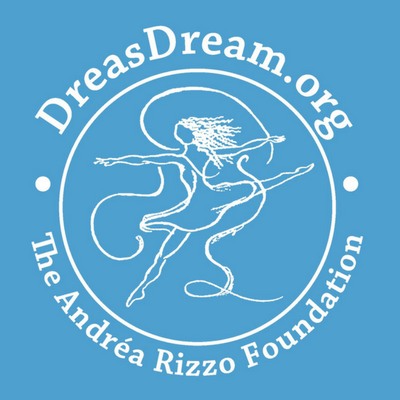MEDICAL DANCE/MOVEMENT THERAPY
The dance/movement therapists who provide Dréa’s Dream Programs in hospitals, medical settings, and schools have specific goals in mind, and while dance/movement therapy stems from a host of traditional theories and approaches, each setting requires the therapist to adapt the training to focus on specific needs. Each Dréa’s Dream program funded by The Andréa Rizzo Foundation is equally special and unique to their location, but here are a few examples of general goals dance/movement therapists implement in different settings. Medical dance/movement therapy in a hospital setting provides:- Developmentally supportive interactions for medically ill children
- Body awareness
- Support in finding calm, release of tension
- Energizes, empowers, expresses
- Decreases anxiety and processes other emotions through embodiment and movement
- Coping with emotional impact of medical illness
- Nurture of family relationships
- Support adjusting to the changes in their life
- Support in parenting
- Support of recovery
- Help in coping with loss
- Permission and freedom to move, feeling of joy in moving
- Pain management
- Support of emotional self-expression about the patient’s experience of his/her illness through symbolic imagery and improvisation using movement, dance and music
Watch one of our Dréa’s Dream programs in action at Connecticut Children’s Medical Center
Learn More about Dance Movement Therapy at Mattel Children’s Hospital UCLA
The UCLA Child Life/Child Development Program launched “Dréa’s Dream” in November 2008, providing dance/movement therapy for children with cancer and special needs.
A Board Certified Dance Therapist (BC-DMT) engages medically fragile children in movement therapy, supporting physical development, anxiety reduction, and creative expression.
DANCE/MOVEMENT THERAPY WITH SPECIAL NEEDS STUDENTS
- Increase of body awareness in relationship to others and self
- Increase of appropriate and healthy socialization/interpersonal relationship skills with peers and teachers
- Fosters kinesthetic empathy of teachers
- Integration of gross motor skills
- Expansion of range of movement
- Coping skills and understanding of self-regulation
- Exploration of individuation and unique self-expression
- Increase of emotional awareness and regulation
- Social skills among peers
- Unification and bonding of classroom members
- Joy, playfulness, spontaneous expression
Below is an example of a dance/movement therapy, Dréa’s Dream program in the school setting.
In Andréa’s own words…
As I student teach in my elementary school classroom, it is so emotional for me to see children who resemble me as a learning disabled child. I want to give these students everything and more. I hope I am successful in doing so as my life in the education field progresses.
PRIVACY
Contact Information
- THE ANDRÉA RIZZO FOUNDATION
- Address:10 East Beach Road Charlestown, RI 02813
- Phone:401-952-2423
- Email:dreasdream@aol.com
- Website:dreasdream.org
